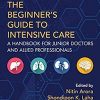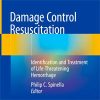Personalized Mechanical Ventilation in ARDS
ncbi.nlm.nih.govA personalized mechanical ventilation approach for patients with adult respiratory distress syndrome (ARDS) based on lung physiology and morphology, ARDS etiology, lung imaging, and biological phenotypes may improve ventilation practice and outcome. However, additional research is warranted before personalized mechanical ventilation strategies can be applied at the bedside.
Ventilatory parameters should be titrated based on close monitoring of targeted physiologic variables and individualized goals.
Although low tidal volume (VT) is a standard of care, further individualization of VT may necessitate the evaluation of lung volume reserve (e.g., inspiratory capacity).
Low driving pressures provide a target for clinicians to adjust VT and possibly to optimize positive end-expiratory pressure (PEEP), while maintaining plateau pressures below safety thresholds. Esophageal pressure monitoring allows estimation of transpulmonary pressure, but its use requires technical skill and correct physiologic interpretation for clinical application at the bedside.
Mechanical power considers ventilatory parameters as a whole in the optimization of ventilation setting, but further studies are necessary to assess its clinical relevance. The identification of recruitability in patients with ARDS is essential to titrate and individualize PEEP.
To define gas-exchange targets for individual patients, clinicians should consider issues related to oxygen transport and dead space.

















